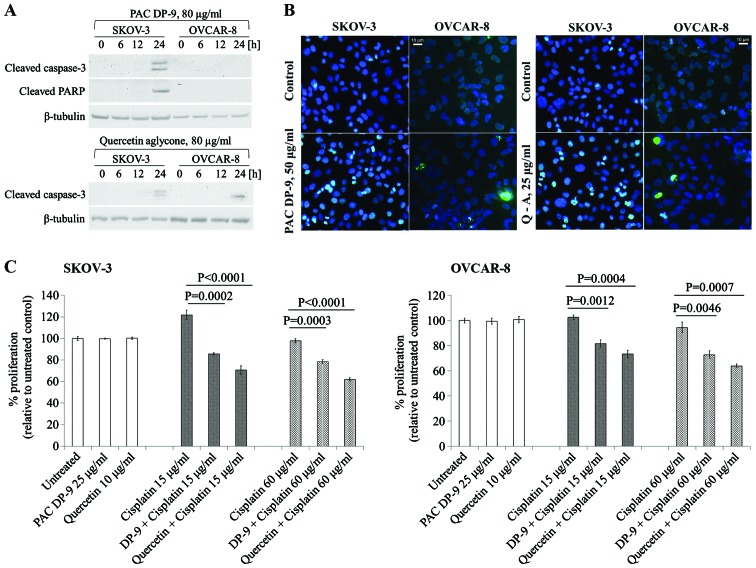Figure 3.
Induction of apoptosis (A and B) and sensitization to cisplatin (C) by quercetin aglycone and PAC DP-9 in SKOV-3 and OVCAR-8 cells. (A) Expression of cleaved caspase-3 and cleaved PARP after treatment with PAC DP-9 and quercetin aglycone. Ovarian cancer cells were treated with PAC DP-9 or quercetin aglycone (80 μg/ml) for 0–24 h. Actin or tubulin were probed as internal loading controls; (B) TUNEL assay in PAC DP-9 and quercetin aglycone (Q-A)-treated SKOV-3 and OVCAR-8 cells. Cells were treated with PAC DP-9 (50 μg/ml), quercetin aglycone (25 μg/ml) or DMSO vehicle for 12 h. DNA strand breaks due to apoptosis were detected and labelled by fluorescein-labelled nucleotides (green). (C) Cell viability of cranberry flavonoid and cisplatin-treated SKOV-3 and OVCAR-8 cells. Cells were pre-treated with either DMSO vehicle, PAC DP-9 (25 μg/ml), or quercetin aglycone (10 μg/ml) for 6 h in complete DMEM media, followed by cisplatin treatment alone or cisplatin + PAC DP-9/quercetin aglycone. Cells were incubated overnight for 12 h and analyzed via MTS for viability. Experiments were performed in triplicate; data are expressed as mean ± SD in percent of cell viability of untreated cells (100%).

